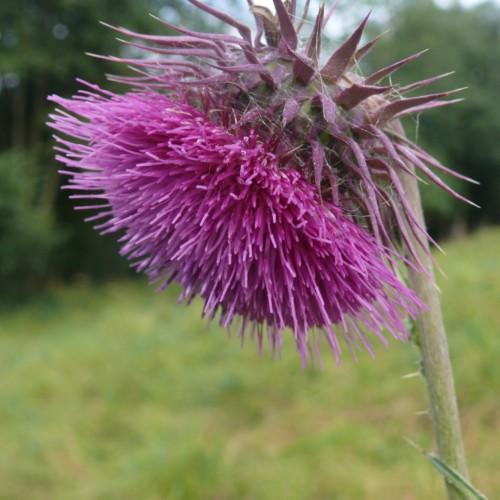
Nodding Thistle
Carduus nutans subsp. nutans
Watering:
Frequent
Hardiness Zone:
Sun:
full sun
Fruits:
Fruits Ready In Summer
Leaf:
Yes
Growth Rate:
Low
Drought Tolerant:
Yes
Salt Tolerant:
Yes
Thorny:
Yes
Invasive:
Yes
Care Level:
Medium
watering
This plant species will need to be watered once a week for a minimum of 15 minutes, although more frequent and longer waterings are preferred. Ensure the soil is moist but not wet and that you are providing enough water for the plant to thrive. Be sure to check the soil levels frequently to make sure the soil still has moisture and doesn't dry out between waterings. Avoid over-watering as this can damage the plant's delicate roots. During the summer months, the Spiny Plumeless Thistle will need more frequent watering due to warmer temperatures.
sunlight
Spiny Plumeless Thistle (Carduus acanthoides subsp. acanthoides) should receive full sunlight throughout the day. Without direct sunlight, the plant may not reach its maximum growth potential and may develop unhealthy or discolored foliage. Ideally, these plants should receive at least 8-10 hours of direct sunlight every day in order to thrive.
pruning
Spiny Plumeless Thistle (Carduus acanthoides subsp. acanthoides) is best pruned in late winter or early spring before buds begin to open. Pruning should be done with sharp shears to remove dead or diseased branches, as well as any weak or straggling branches. Avoid pruning too heavily, as this can reduce flowering. When possible, prune to an outward-facing bud to encourage bushy growth. Additionally, the Spiny Plumeless Thistle can be cut back to the ground each year to encourage new growth.
